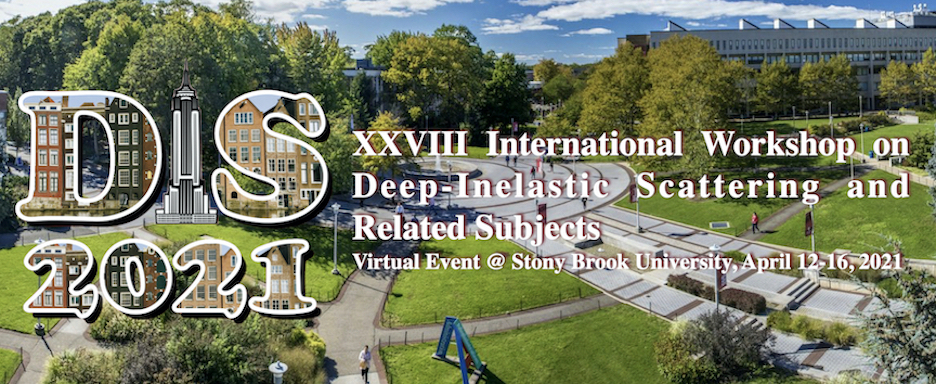Speaker
Description
We discuss the production mechanism of a new state, a fully charm tetraquark, discovered recently by the LHCb at M = 6.9 GeV in the $J/\psi J/\psi$ channel. Both single parton scattering (SPS) and double parton scattering (DPS) mechanisms are considered. We calculate the distribution in the invariant mass of the four-quark system $M_{4c}$ for SPS and DPS production of $c c \bar c \bar c$-system in the $k_T$-factorization approach with modern unintegrated gluon distribution functions (UGDFs). The so-calculated contribution of DPS is almost two orders of magnitude larger than the SPS one, but the tetraquark formation mechanism is unknown at present. We construct a simple coalescence model of the tetraquark out of $c \bar c c \bar c$ continuum. Imposing a mass window around the resonance position we calculate the corresponding distribution in $p_{T,4c}$ - the potential tetraquark transverse momentum. The cross section for the $J/\psi J/\psi$ continuum is calculated in addition, again including SPS (box diagrams) and DPS contributions which are of similar size. The formation probability is estimated trying to reproduce the LHCb signal-to-background ratio. The calculation of the SPS $g g \to T_{4c}(6900)$ fusion mechanism is performed in the $k_T$-factorization approach assuming different spin scenarios ($0^+$,$0^-$ and $2^+$). The $2^+$ and $0^+$ assignment is preferred over the $0^-$ one by the comparison of the transverse momentum distribution of signal and background with the LHCb preliminary data assuming the SPS mechanism dominance. There is no microscopic approach for the DPS formation mechanism of tetraquarks at present as this is a complicated multi-body problem. We do similar analysis for FCC energy $\sqrt{s}$ = 100 TeV. We predict cross section order of magnitude larger than its counterpart for the LHC. We discuss also a possibility to observe the $T_{4c}$ state in the $\gamma \gamma$ channel. The signal-to-background ratio is estimated.
First part of the presentation will be based on our recent paper:
R. Maciula, W. Schafer and A. Szczurek, "On the mechanism of $T_{4c}(6900)$ tetraquark production", Phys. Lett. B812 (2021) 136010.

